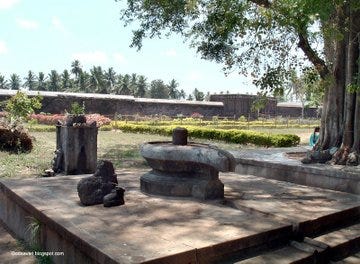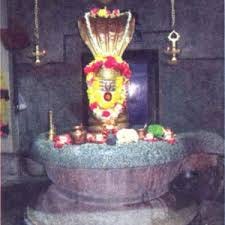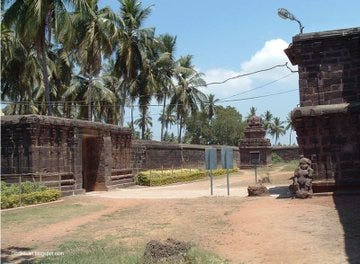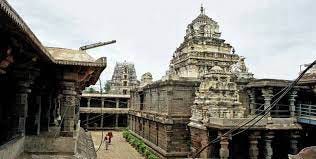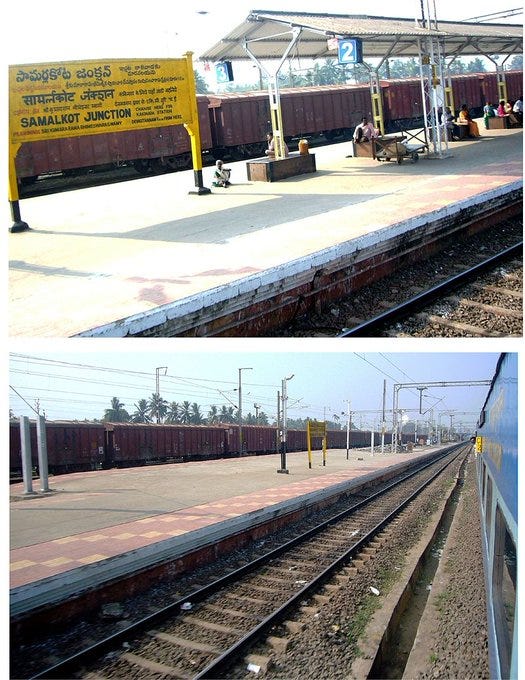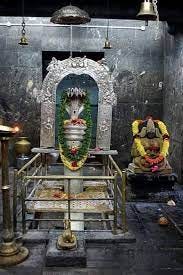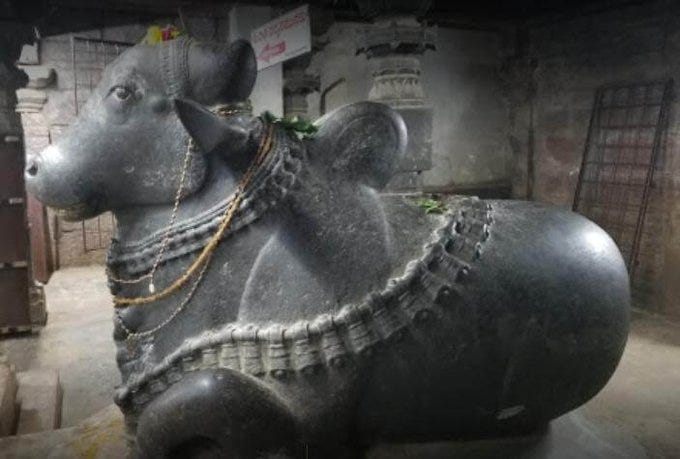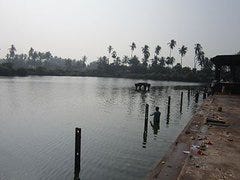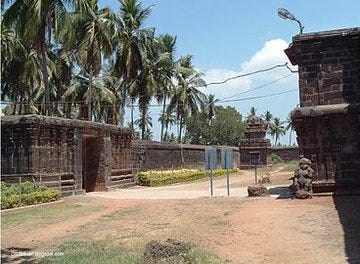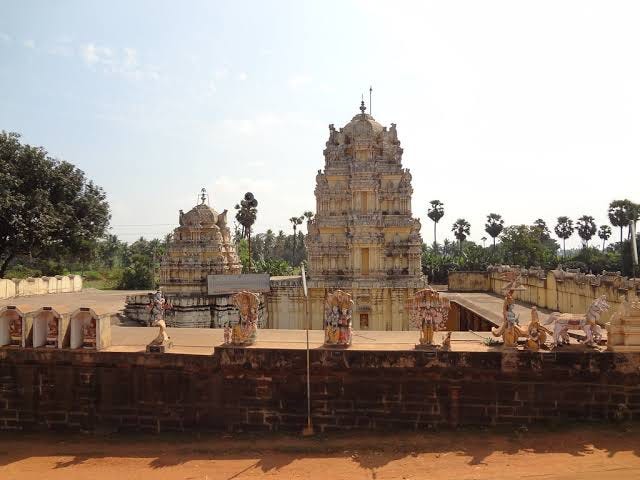Samarlakota Kumararama
Samarlakota, one of the Pancharamas, that has the Kumara Bhima Rama Temple dating back to 10th century, as well as the Mandavya Narayanaswamy Temple.
Located on the Chennai-Howrah railway line, Samarlakota is the main junction for Kakinada, just 28 min away by railway. If you were travelling on this route, this station would have been a familiar sight.
Samarlakota's earlier name was Shyamaladevi Kota, which in due course of time changed to this. It's believed there was a temple to Shyamalamba here, though it's not found now. The Pancharamas are 5 Shaiva Kshetras, located in coastal Andhra at Draksharamam, Samarlakota(Kumararama), Bhimavaram( Bhimavaram), Palakollu( Ksheerarama) and Amaravati( Amararama).
Tarakasura was a devotee of Shiva, who was protected by the Atma Lingam he wore, that made him all powerful. The Devatas pleaded Kumara Swamy, to kill the Asura. However the Atma Lingam protected Tarakasura, and whenever Karthikeya's spear struck him, his body once again rejoined. It was then Vishnu suggested Karthikeya to shatter the Atma Lingam first. Karthikeya shattered the Atma Lingam with his spear, and killed Tarakasura. The Lingam was broken into 5 pieces, and the places where those pieces fell on earth, are what are called as Pancharamas( Places of rest).
Also Vishnu warned Karthikeya, that the fragments of the Atma Lingam that fell to earth must be secured immediately to stop them from growing. This is the reason why the Shiva Lingas in these Pancharama Kshetras are very tall.
The Kumara Bheemarama Temple at Samarlakota dates to the 10th century, and was built by the Chalukyan ruler Bhima, who also built the Draksharama Temple, reason why both those temples look very similiar. Again like at Amaravati, Draksharamam, the Shiva Linga at Kumararama is quite tall, 14' in height, covering two stories, and is white in color. Shiva is worshipped as Kalabhairava here, while his consort is Balatripurasundari.
The temple has a large courtyard around it, the main shrine covers two stories, and there are 4 entrances, with the koneru. The huge Shivalinga covering two stories in the main shrine is a sight to behold. There is also a large Nandi right opposite the main shrine, carved out of a single rock, while the Shiva Linga here is carved out of limestone. The boundary walls are built of sandstone, much like the Draksharama temple.
Another feature of this temple is that during Chaitra-Vaisakha period, the sunrays touch the feet of Shiva during the morning and that of Tripurasundari during evening. Many devotees come to witness this. Surrounded by coconut groves, lush green paddy fields,the Kumara Bhimarama Temple is worth a visit, as well as for it's Chalukyan style architecture.
The other famous temple in Samarlakota is the Mandavya Narayanaswamy , located on the Tulya river, one of the 7 tributaries of the Godavari river. It's believed that the deity here was installed by Rishi Mandavya, and this is also called Dakshina Badri.
The Mandavya Narayanaswamy temple was built by Vijayaditya, the grandson of Pulakesin II, around 655 AD. He also built the shrine to Mahalakshmi in the main complex. It's believed this murthi was found by fishermen in the sea. Also since the shrine of Mahalakshmi is located separately from that of Narayana here unlike most Vaishnava temples , she is referred to as Veeralakshmi in this temple.
Again here too the sunrays directly fall on the main deity, during Uttarayana, the pillars here are richly carved. Narayana with 8 Arms, mounted on Garuda is the Kshetrapalaka of this temple.
Located on the Chennai-Howrah line, Samarlakota can be easily reached by rail, with most of the trains stopping here. And a good visit for the Kumararama Bheemeswara Temple, as well as the lush green surroundings.




